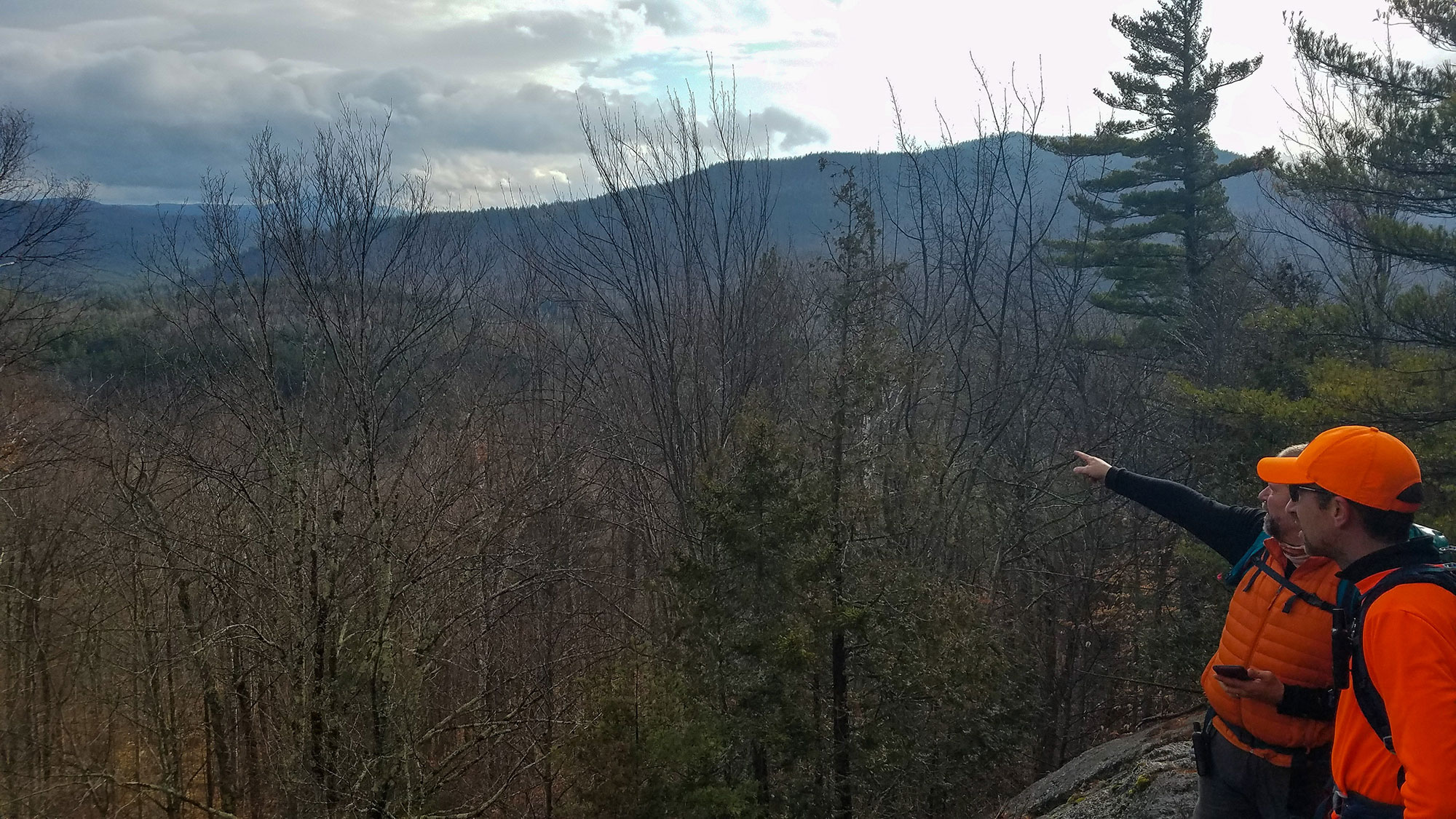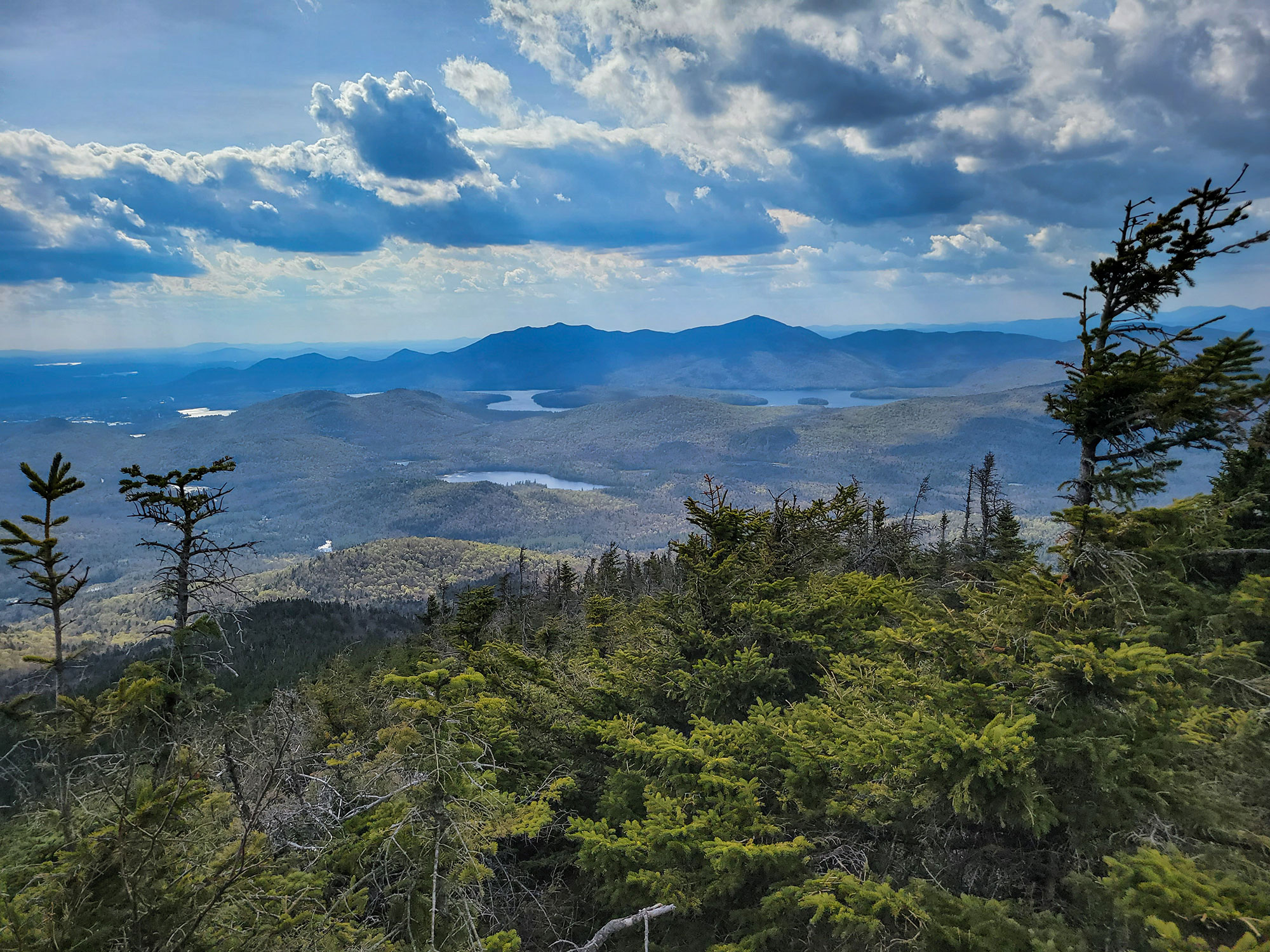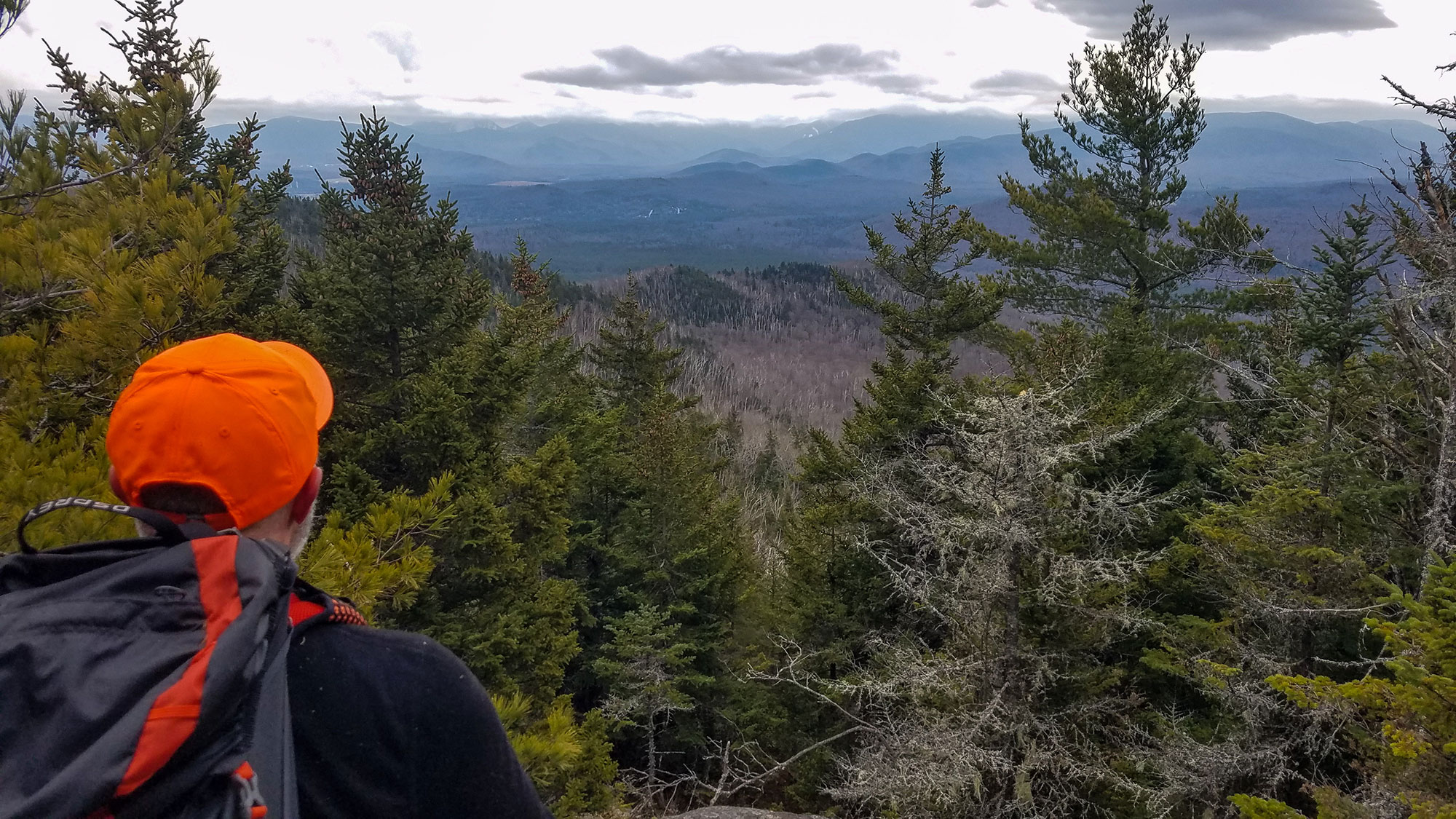A bushwhack: any formal definition will include something along the lines of “not following an established trail” or “clearing a path through dense vegetation”. While the former is fairly spot on, the latter doesn’t hold true for most bushwhackers. Many tend to head off trail for solitude, a sense of place in wild spaces, and unspoiled wilderness. That last part wouldn’t be possible if paths were being cleared.
Stepping off trail to travel in the backcountry can seem scary, daunting, and difficult at first. That’s honestly because it is. However, it can be fun and rewarding given the right approach and preparation. Consider following these five key steps for success on your bushwhacking adventures.

1. The Fundamentals
Before planning ahead and going on a trip, learning how to use a map and compass by taking a class is a great idea. Northeast mainstays like the Adirondack Mountain Club and the Green Mountain Club offer workshops that’ll get you acquainted with reading topographic maps, using a compass in tandem with them, and putting those skills to the test in real scenarios. In addition to these hard skills, becoming comfortable on marked trails, and even well-traveled herd paths often found in our mountains, is a great idea. Not often talked about, picking up some plant identification guides, and putting them to use, is useful in helping to avoid trampling fragile and rare vegetation. It’s an essential part of Leave No Trace principles.
2. The Gear You’ll Need
Bushwhacking not only requires you to carry all the essentials of a regular hike on a marked trail (like a map and compass) but also to bring along some specific items.
- Long pants and a long sleeve shirt
- Eye protection
- Trekking poles
- Sturdy hiking boots
- GPS (Garmin InReach is what I use)
- Software that allows you to draw routes and export “gpx” files (I use CalTopo)
The first four are a result of the terrain you encounter hiking off the trail. You’ll want your arms and legs covered to protect against scrapes from spruce trees, and the ticks that you’ll encounter more often than you would on a trail. Trail running shoes tend not to do well during bushwhacks, so having a sturdy pair of boots, along with trekking poles, will help you on the generally uneven, sometimes muddy and rooty terrain. In tandem with a map and compass, the navigation gear and software are incredibly helpful off trail. The next step walks you through some ways you can use a few different navigational tools.

3. Choosing a Destination
Like I said earlier, stepping off the trail can be scary, and knowing where to start can be as well. Choosing a route near a popular trailhead, a destination surrounded with nearby roads, or the combination of the two can be a safe start. Looking at paper maps can help you find trails and identify roadways, and used in tandem with Google Earth, you can even assess tree type. Recognizing the difference between deciduous tree cover (easier travel, typically lower elevations) and coniferous tree cover (harder travel, typically higher elevations) will make your first few bushwhacks more manageable. Looking for water crossings, and avoiding them, is important on your first bushwhacks, as well as factoring in slope angle and length of the trip.
Researching regulations of the land you plan on recreating in is paramount. Popular hiking areas, like the Ausable Mountain Reserve in the Adirondacks, allow for travel on trails, but do not permit bushwhacking.
4. How to Create a Route
First and foremost, knowing how to use the paper map and compass you bring along is essential. Modern technology, however, has afforded us the opportunity to make our travel a bit easier. Think of it as another tool in your toolbelt. Using an online mapping software like CalTopo helps with planning a bushwhack. Within CalTopo, you can use multiple different layers to identify where public land is, important landscape features, and possible destinations like a body of water or small summit. Once you have a possible bushwhack in mind, you can simply trace a route, assess its distance and elevation gain, and download it as a “gpx” file. Garmin has a fantastic software called Garmin Explore, where you can upload the file you saved, and it’ll sync to both the GPS you have, and an application on your phone. This adds great redundancy to your navigation system in the backcountry. You can use a paper map and compass, your GPS, and your phone as tools for travel.

5. Tips for the Bushwhack
Now that you’re prepared with all the necessary gear, know-how, and a route, it’s time to step off the trail. Here are some tips for when you take the leap:
- During a bushwhack, go slower than you would on a trail. This lets you be mindful of topography, drainage patterns, and other landscape cues to get you to your destination.
- Look for seams in tree type (deciduous versus coniferous), where the woods may be more open. Sometimes it’s better to take the path of least resistance going up a slope, rather than a straight line to the summit. Greater distance travelled doesn’t always equal more time.
- During hunting seasons, wear bright colors. Hunters are inherently bushwhacking, and are out in the same wild spaces as those that are hiking.
- Avoid private land boundaries, which can be marked, but oftentimes aren’t.
- Keep an eye out for open rock and thin trees, this is where you’ll find the views.
So why would you want to bushwhack? There are some obvious, perhaps glaring, answers to the question. You can get away from the crowds in a tangible way. In many years of bushwhacking, I’ve come across one other person off trail. You can learn new skills, especially with the preparation it takes to actually go on a bushwhacking adventure. These skills can even allow you to take on some hiking challenges that require bushwhacking, like the popular Catskill 3500 footers.
Aside from these tangibles, the creative process that you go through to plan routes, in addition to the solitude and wild nature of where you end up, become many bushwhackers “why”. It allows you to experience adventure in its truest sense, and can be a rewarding endeavor when done safely.
Troy Tetreault
Troy is a published scientist and writer based in Lake Placid, NY. He's spent time living, climbing, and doing ecological research out west, especially in the mountains of Idaho, Wyoming, and Montana. Back east, the Adirondack Mountains are his home, and you'll find him trail running, climbing, or identifying every plant he finds.
Related Posts
April 2, 2024
10 Tips for Mountain Biking Etiquette During Mud Season
One rough spring could ruin the…




